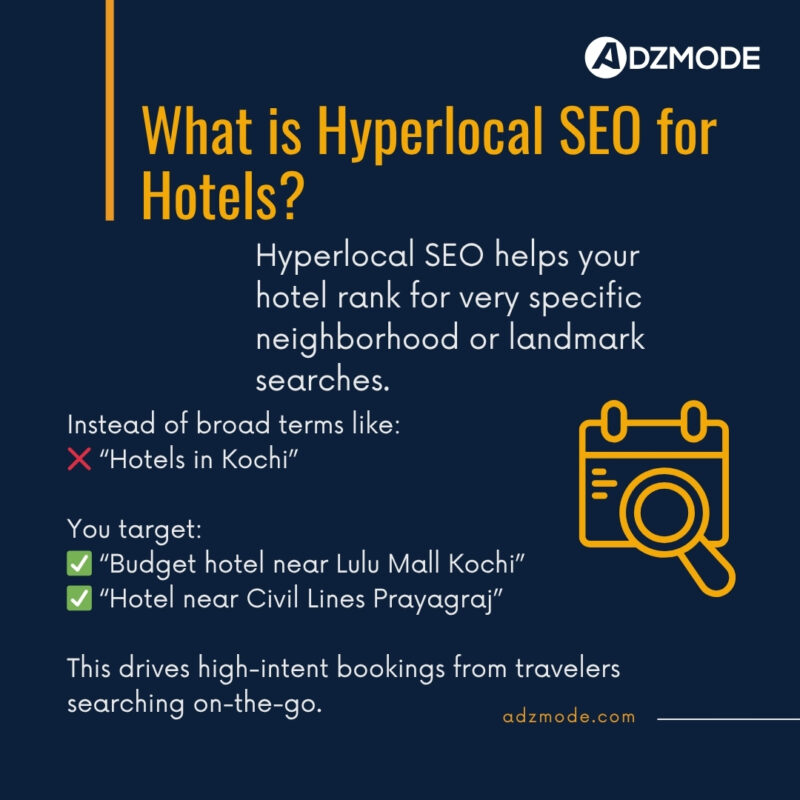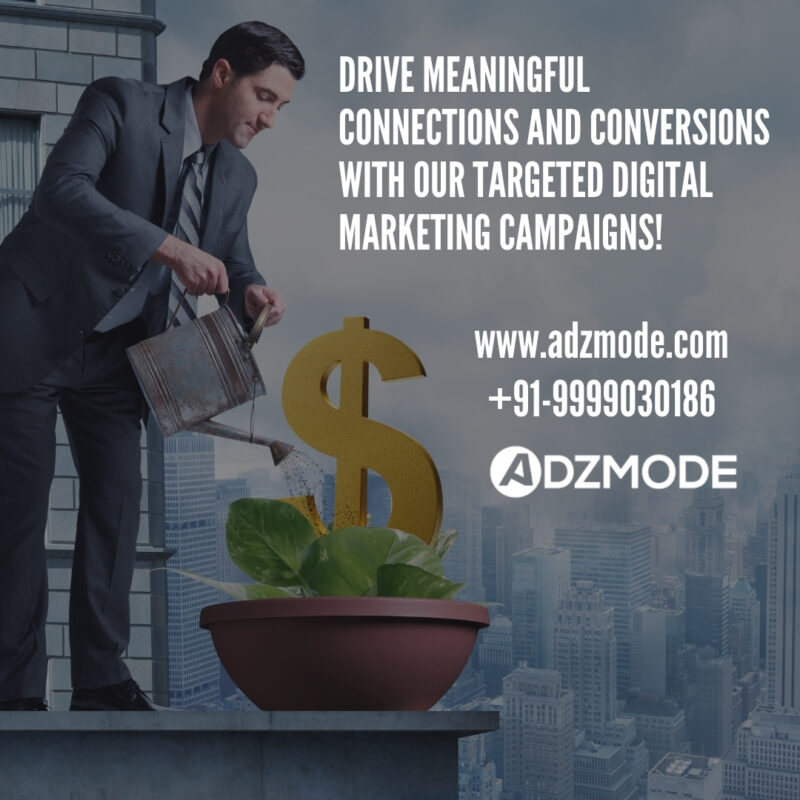
In an industry driven by customer experience, visual storytelling, and timely engagement, digital marketing for hotels with low occupancy has become an essential strategy to survive and thrive. When room bookings drop and seasonal footfall declines, many hotel owners scramble for last-minute solutions, often overlooking the powerful digital tools at their disposal. However, what separates thriving hospitality brands from struggling ones isn’t just better service—it’s a stronger digital presence.
India’s hospitality landscape is evolving rapidly. With increasing competition from aggregators, homestays, and boutique stays, hotels—whether independent or part of a chain—must utilize digital marketing not as an afterthought, but as a foundation for sustainable success. From optimizing online visibility to mastering targeted advertising, there are time-tested, data-driven solutions that can revive hotel occupancy and build long-term brand equity. This guide explores seven proven digital marketing strategies specifically tailored for hotels dealing with low occupancy. These fixes are not just theoretical—they work. They drive direct bookings, enhance guest engagement, and keep your rooms filled even during off-peak seasons.
1. Fix Your Website and Booking Funnel
The first impression for any hotel is no longer the lobby—it’s the website. An outdated, non-mobile-friendly, or slow website can severely impact booking conversions.
What to Fix:
- Speed Optimization: Ensure your site loads in under 3 seconds.
- Responsive Design: Mobile accounts for over 65% of hotel searches in India.
- Booking Engine Integration: Embed a fast, secure, and user-friendly booking widget.
- Trust Signals: Add Google reviews, TripAdvisor ratings, certifications, and high-quality testimonials.
- SEO Structure: Ensure your pages are indexable, fast, and structured with schema markup for hotels.
A well-optimized hotel website is more than a digital brochure—it’s your 24/7 booking agent.

2. Leverage Google Hotel Ads and Meta Search Platforms
Google Hotel Ads are a goldmine for visibility, especially for hotels struggling with low occupancy. Unlike generic PPC ads, hotel listings appear directly in search results with real-time prices, availability, and a direct link to your site.
Platforms to Integrate:
- Google Hotel Ads
- TripAdvisor Sponsored Placements
- Trivago, MakeMyTrip, and Goibibo Meta Search Options
- How It Helps:
Targets high-intent travelers - Reduces OTA dependency
- Drives direct bookings with higher margins
Ensure your booking engine supports Google’s Price API for real-time listing updates.
3. Run Targeted Social Media Campaigns
Social media is not just about likes—it’s a high-converting channel when used strategically. For hotels with low occupancy, platforms like Instagram and Facebook can drive immediate interest when paired with the right content and offers.
What Works:
- Flash Sale Campaigns: Promote “last-minute weekend getaways” with limited-time discounts.
- Video Tours: Use Reels and Stories to showcase room interiors, spa services, and poolside scenes.
- Local Events Promotion: Capitalize on regional festivals, weddings, or conferences happening nearby.
- Geo-Targeted Ads: Run campaigns aimed at neighboring cities (e.g., Delhi ads for weekend getaways in Dehradun).
Bonus Tip: Use lead forms in Facebook Ads to capture emails and retarget later with personalized offers.
Looking to redesign your hotel’s online presence? Partner with the best web design company in India and turn your website into a high-converting booking machine.

5. Partner with Influencers and Micro-Creators
Travel influencers play a pivotal role in shaping consumer behavior. Influencer marketing doesn’t always require a massive budget—partnering with micro-influencers (5K–50K followers) can bring high engagement and ROI.
What to Look For:
- Engagement rate over follower count
- Audience demographic that aligns with your market
- Previous collaborations with hospitality brands
Offer complimentary stays in exchange for a content package (photos, reels, reviews). Influencer-generated content can also be reused in ads and social media campaigns.
Best Influencer Platforms:
- Influencity
- Winkl
- OPA (One Page Agency India)
Visit: hotel website is not getting bookings
6. Optimize for Local SEO and Google My Business
Many low-occupancy hotels ignore local search—despite the fact that over 88% of travelers use Google Maps and Search to explore accommodations.
Optimization Checklist:
- Fully verify and update your Google Business Profile
- Add 30+ high-quality photos (rooms, dining, amenities)
- Collect and respond to reviews consistently
- Use keywords like “budget hotel in [city]” or “family stay near [landmark]”
Create location-specific landing pages optimized for phrases like:
- “Hotels near Pune Railway Station”
- “Resorts in Lonavala for weekend stay”
7. Use Retargeting and Lookalike Audiences to Boost Conversions
Retargeting allows hotels to reach users who visited the website but didn’t book. Combine this with lookalike audience targeting to expand your reach to people who resemble your past guests.
- Retargeting Platforms:
- Google Display Network
- Facebook & Instagram
- Criteo for dynamic hotel retargeting
Tips:
- Use urgency in ad creatives: “Only 2 rooms left this weekend!”
- Segment by visit behavior: users who saw deluxe rooms get shown premium offers.
- A/B test your retargeting creatives weekly.
- Lookalike audiences built from your CRM or Facebook Pixel data can significantly improve conversion rates for new guests.
Need help building a bulletproof digital marketing plan for your hotel? Let our expert digital marketing agency in India drive the visibility and direct bookings your brand deserves.

Bonus Fix: Launch Experience-Based Packages
Low occupancy often results from offering generic room types without added value. Instead of just discounting rooms, bundle experiences.
Package Ideas:
- Couple’s spa & stay
- Family adventure weekends
- Food and stay packages with local cuisine
- Yoga retreats or monsoon treks
Promote these experience-based offerings on your homepage, social media, and newsletters. This strategy improves perceived value and helps you stand out.
Metrics That Matter: How to Measure Success
Monitoring KPIs is crucial to ensure your digital marketing efforts are translating into occupancy improvements.
Metric Why It Matters
- Occupancy Rate Main indicator of campaign effectiveness
- Website Conversion Rate Tells you how many visitors become bookers
- Cost per Booking (CPB) Essential for budget allocation
- Click-Through Rate (CTR) Indicates ad and email performance
- Revenue per Available Room (RevPAR) Links pricing to digital ROI
Use tools like Google Analytics 4, Facebook Ads Manager, and your booking engine’s dashboard to track these metrics regularly.
Tools Every Hotel Should Be Using
- Google Analytics 4: For in-depth user behavior tracking
- Meta Business Suite: For social media ad management
- Canva or Adobe Express: For quick design work
- Chatbots (Tawk.to, Drift): For real-time inquiry handling
- OTA Insight or RateGain: For competitor rate intelligence
Avoid These Common Digital Marketing Mistakes
Many hotels with low occupancy continue repeating the same digital pitfalls:
- Ignoring mobile-first design
- Failing to update seasonal content
- Not investing in paid media
- Lack of email segmentation
- No retargeting setup
Fixing these issues can create instant performance boosts and set the stage for long-term success.
Visit: hyper local seo for hotels
Conclusion:
In a saturated hospitality market, digital marketing for hotels with low occupancy is not merely a reactive strategy—it’s a proactive growth lever. From optimizing websites and launching compelling email campaigns to leveraging influencers and location-based SEO, each fix covered in this article has the power to fill rooms, even in challenging seasons. A strategic, data-backed digital plan ensures that every digital touchpoint—whether a Google search, Instagram scroll, or email click—drives potential guests toward booking.
Share Your Project Requirements With Us






